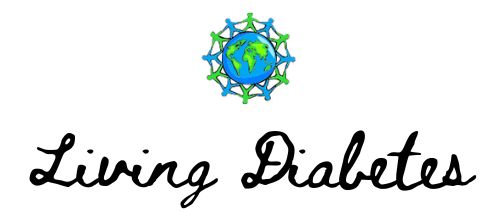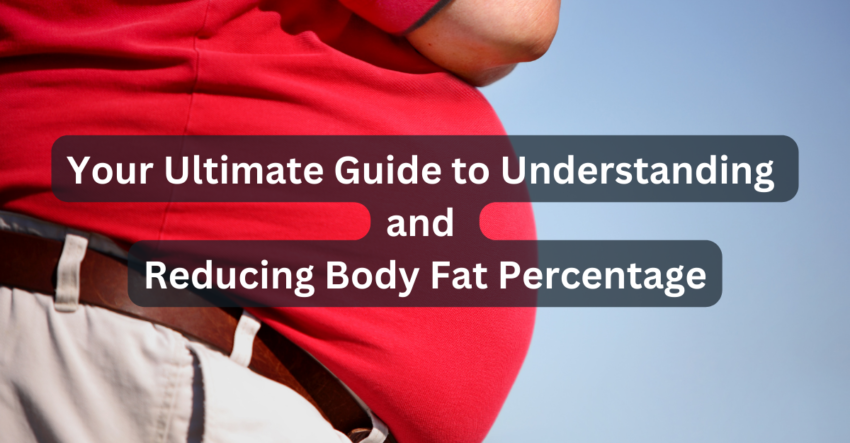Body fat percentage is a crucial health marker, distinguishing between essential and storage fat—both pivotal for our body’s proper functioning. Elevated body fat percentages are linked to a range of health issues, including hypertension, high cholesterol, and, significantly, type 2 diabetes. Understanding body fat percentage versus BMI, which fails to differentiate lean mass from fat, is essential in assessing genuine health risks associated with obesity and insulin resistance.
Diving into the realm of body fat percentages not only illuminates one’s fitness level but also underscores the importance of maintaining balance to ward off diseases like obesity and type 2 diabetes. This guide will navigate through practical strategies to measure and reduce body fat percentage safely, fostering a healthier lifestyle. It serves as a beacon for those aiming to improve their body composition through informed, practical steps, reinforcing the brand’s commitment to supporting its community in their health journeys.
Understanding Body Fat Percentage
Understanding body fat percentage is pivotal in assessing overall health and fitness levels. Unlike BMI, which may not accurately reflect body composition, body fat percentage offers a direct insight into the amount of fat relative to lean body mass. Here’s a closer look at its significance:
-
Types of Body Fat:
- Essential Fat: Vital for bodily functions, found in nerves, brain, and organs.
- Storage Fat: Offers protection and insulation, stored under the skin and around organs.
- Categories of Fat: White, brown, beige, subcutaneous, and visceral fat are included, each playing different roles in metabolism and health.
-
Ideal Body Fat Percentages:
- According to the American Council on Exercise, healthy ranges differ by age and gender. For instance, women aged 20–39 should aim for 21%–32%, while men in the same age group should target 8%–19%. [1]
- Recognising that factors like age and genetics influence body composition helps set realistic health and fitness goals.
-
Health Implications:
- High body fat percentages, especially visceral fat around the abdomen, are linked to increased risks of type 2 diabetes, heart disease, and other metabolic syndromes. [2]
- Conversely, too low body fat can lead to nutrient deficiencies and hormonal imbalances, underscoring the importance of maintaining a balanced body fat percentage for optimal health.
Methods to Measure Body Fat at Home
Measuring body fat percentage at home can be a practical and insightful way to understand your body composition, offering a clearer picture of your health status beyond what traditional scales or BMI can provide. Here are some accessible methods:
-
Skinfold Callipers and Body Circumference Measurements:
- Skinfold Callipers: Require pinching and measuring subcutaneous fat thickness at various body sites. While affordable and portable, accuracy hinges on the user’s skill, potentially leading to a 3.5-5% margin of error. [3]
- Body Circumference Measurements: Involve using a tape measure at specific body points and applying the measurements to equations that estimate body fat percentage. This method demands precision and anatomical knowledge for reliable results.
-
Technological Aids:
- Body Fat Scales (Bioelectrical Impedance): These scales estimate body fat by sending a small electrical current through the body. They’re easy to use but can vary in accuracy due to factors like hydration levels. [4]
- Smart Scales: Offer a broader view of body composition, including body fat percentage, though their reliability may differ among models.
-
Simple Ratios and Measurements:
- Waist Circumference and Waist-Hip Ratio: Provide insight into fat distribution, particularly around the abdomen, which is a crucial factor in assessing health risks. These straightforward methods require only a tape measure but offer limited information on overall body fat percentage.
- The “String Challenge”: A novel way to gauge abdominal fat by comparing a string’s length (equal to your height) folded in half around your waist. It’s a simple visual tool to indicate potential health risks associated with abdominal fat.
Regular monitoring through these methods, complemented by tracking changes and taking progress pictures, can offer valuable insights into your health journey and the effectiveness of your fitness regimen.
Professional Methods for Accurate Calculation
Professional methods offer unparalleled precision for those seeking the most accurate calculations of body fat percentage. These methods, typically administered by healthcare professionals or trained fitness experts, delve deeper into body composition, providing a comprehensive overview of one’s health status. Here’s a brief comparison of the most reliable professional methods:
-
Underwater Weighing (Hydrostatic)
- Accuracy: Very high
- Availability: Limited, primarily in research or high-end fitness centres
- Cost: Can be expensive
- Procedure: Involves submersion in water, requires breath control
- Considerations: Not suitable for everyone due to the need for submersion and breath control
-
Air Displacement Plethysmography (Bod Pod)
- Accuracy: High
- Availability: Mostly in universities, medical settings, or certain fitness facilities
- Cost: Moderate to high
- Procedure: Measures body density using air displacement
- Considerations: Non-invasive and quick, but access may be limited
-
Dual-energy X-ray Absorptiometry (DEXA/DXA)
- Accuracy: Considered the gold standard
- Availability: Medical or research settings
- Cost: High
- Procedure: Quick and pain-free scan uses a small amount of radiation
- Considerations: Provides detailed body composition, including bone density, but involves radiation exposure
Each of these methods has its own unique advantages and limitations, with the choice often depending on the individual’s specific health goals, body composition, and access to facilities. Consulting with a healthcare provider or fitness expert can help determine the most appropriate measurement method for an accurate body fat percentage.
Interpreting Body Fat Percentage Results
Interpreting body fat percentage results can be a gateway to understanding one’s health more profoundly. Here’s a breakdown to help navigate through the numbers:
-
Body Fat Percentage Graph:
- Below the middle line: Indicates less than average body fat.
- Above the Line: Signifies higher than average body fat.
-
Fat Mass Index (FMI):
- Men: Normal ranges are 3-6. Values above indicate excess fat.
- Women: Normal ranges are 5–9. Values above are classified as excess fat.
-
Visceral Area Fat (VAT):
- Above 100: Increases risk for diabetes, high cholesterol, heart disease, and hypertension.
- Above 160: High-risk category for the conditions above.
- Lean to Height Ratio: Offers a general measure of total body muscle mass. In contrast, the appendicular lean-to-height ratio focuses on the muscle mass of the arms and legs, which is useful in rehabilitation scenarios.
- Bone Density: The middle line in the bone density report indicates normal bone density for age. A low reading might necessitate a DXA bone density study.
Understanding these metrics is crucial as they directly correlate with health risks. For instance, individuals with body fat percentages beyond the healthy ranges (Women: 25-31%, Men: 18-24%) are at an elevated risk for chronic diseases such as type 2 diabetes, heart disease, high blood pressure, and certain cancers. This insight underscores the importance of maintaining a balanced body fat percentage for overall health and well-being.
Tips for Reducing Body Fat Percentage
A holistic approach encompassing diet, exercise, and lifestyle adjustments is paramount to effectively lowering your body fat percentage. Here are actionable tips to guide you:
-
Dietary Changes:
- High-Protein and Fibre Diet: Incorporate lean meats, legumes, and vegetables to enhance satiety and boost metabolism.
- Healthy Fats: Opt for sources like avocados, nuts, and olive oil to improve cholesterol levels and reduce abdominal fat.
- Limit Refined Carbs and Sugary Drinks: Swap for whole grains, water, or green tea to avoid blood sugar spikes and excess calorie intake.
- Probiotics and Apple Cider Vinegar: These can regulate appetite, improve digestion, and assist in breaking down visceral fat.
-
Exercise Regimen:
- Combine Cardio and Strength Training: Aim for a mix of HIIT, weight lifting, and moderate cardio to maximise calorie burn and muscle building.
- Consistency is Key: Dedicate at least 150–300 minutes weekly to physical activity, adjusting intensity as your fitness improves.
-
Lifestyle Adjustments:
- Quality Sleep: Ensure 7-8 hours of restful sleep to regulate hormones that control appetite and fat storage.
Implementing these strategies can significantly impact your body composition, leading to a healthier and more balanced body fat percentage.
Conclusion
Embarking on the journey to understand and reduce body fat percentage is a profound step towards enhancing one’s health, longevity, and overall well-being. This guide has illuminated the significance of differentiating between essential and storage fat, underscored the health risks associated with high body fat percentages, and provided actionable insights into measuring and reducing body fat in both home and professional environments. By navigating through the complexities of body composition, individuals are better equipped to set realistic health and fitness goals, ultimately fostering a healthier lifestyle.
The path to a balanced body fat percentage encompasses a holistic approach involving dietary adjustments, consistent exercise regimens, and mindful lifestyle changes. The broader implications of adopting such measures contribute to individual health and set a precedent for combating prevalent health issues such as obesity, type 2 diabetes, and cardiovascular diseases. As readers embark on or continue their health journeys, this guide serves as a compass, pointing towards informed decisions and sustainable health practices that resonate with the core message of maintaining a balanced body fat percentage for a vibrant, healthy life.
FAQs
Q: What’s the best way to decrease body fat percentage? A: Engaging in aerobic exercises, commonly known as cardio, is one of the most effective methods to decrease body fat percentage. Cardio workouts help condition your cardiovascular system by increasing your heart rate and oxygen consumption.
Q: How can I lower my body fat percentage? A: Aim for 150–300 minutes of moderate to vigorous exercise each week to lower your body fat percentage, which breaks down to about 20–40 minutes of daily cardio. Activities such as running, walking, cycling, and swimming are excellent forms of aerobic exercise contributing to fat loss.
Q: What steps should I take to lose 20% of body fat? A: To significantly reduce your body fat percentage by 20%, you should incorporate high-intensity interval training (HIIT) and resistance training into your workout routine. Maintaining a calorie deficit and consistent macro tracking, focusing on micronutrient-rich foods, managing stress levels, and ensuring adequate sleep are crucial strategies for fat loss.
Q: When is it appropriate to start cutting body fat? A: Men should consider cutting when their body fat percentage is close to or above 18%, and women should do so at or above 28%. Conversely, men should bulk if they are near or below 8% body fat, and women should bulk at or below 17%. If your body fat percentage falls between these ranges, the decision to cut or bulk should be based on your personal goals for leanness in the next 2–3 months.

